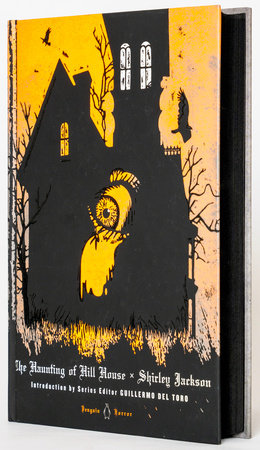The Haunting of Hill House by Shirley Jackson
In this week’s group discussion, we were asked which is more
effective for ghost stories: fast-paced or slow burn. The Haunting of Hill House
by Shirley Jackson is definitely the latter. Since I grew up in an era of ‘can’t
catch my breath’ thrilling ghost stories, I could immediately tell that this
book was older, from 1959 upon further research.
The beginning of this book had me hooked. We got the gold
dining set debacle with the old sisters who owned the house, and the theories
about subterranean waters instead of ghosts. My favorite funny moment was
doctor joking about how he wouldn’t have hanged himself from the library tower
like one person did and would instead have liked it to be from the deer head in
the game room.
This book kept sending my mind to the movie Clue (1985).
The feeling of the old house and the people interacting drew me there,
especially after the ominous story of the two daughters of Hugh Crain. The
details about the house being just slightly off in angles was great.
But the characters ruined this book for me.
The story centered around the mindset of Eleanor Vance, a
woman mentally unstable after taking care of her disabled and demanding mother
for years. So we have an unreliable narrator who could either be especially
sensitive to the supernatural or could be seeing and hearing things the other
characters couldn’t because of a psychotic break.
And oh, Eleanor could whine! The first few sections of the
book had me hooked, even through the slow burn of getting to the writing of the
blood on the walls the first time and the dog. But then we have Nell’s repeated
‘journeys end in lovers meeting’ that drove me crazy. Plus her wishy-washy relationship
with being almost cousins with Theodora, then hating her, then heartfelt wanting
to move in with Theo, etc. Theodora was no saint herself as a character, a
clear caricature of a whiny and spoiled rich kid. Luke was the classic
troublemaker that begrudgingly helped. The Mr. and Mrs. Dudley are the stereotypical
Scooby-Doo rude caretakers of the estate. A slow burn isn’t a bad way to tell a
ghost story, but these characters were not helping the situation.
There were very few decent characters. Dr. Montague was a good
leader of the group, and I found when his wife came in she was ridiculously
over the top, adding yet another humorous element to the story. Arthur, the toxically
masculine teacher and guard, was entertaining on occasion but forgettable. But
the book wasn’t told from their points-of-view.
Almost everything after the first bloody writing and dog seemed
to drag for me, excluding Mrs. Montague’s outbursts. The plot was too much of
Eleanor’s internal dialog and thoughts. If they had been about the ghosts,
perhaps it would have been interesting, but instead they were all about how she
was perceived by the other characters. I had hoped the ending would turn
everything around, back to the enjoyment I had at the beginning. It did not.
Eleanor finally snaps. She runs around banging on doors
daring people to open them in case she is a ghost. She runs up a decrepit
staircase, putting herself and Luke (sent to get her) in danger. The others
force her to leave the house because she shouldn’t be enjoying staying in such
a cursed environment. Thus, she drives her car into a tree, and her last
thought is why, as if the spirit of Hill House possessed her and made her do
it. Of course, we don’t technically know she is dead, but the end chapter of
the book is telling what all the other characters did after, but there is no
mention of Eleanor, so it can be assumed she is gone. I wonder if her spirit
stayed at Hill House to join Hugh Crain.
Overall: While I don’t mind a slow build up for ghost
stories, this book fell flat for me. But perhaps the recent TV adaptation is
better, though I’ve never seen it.



